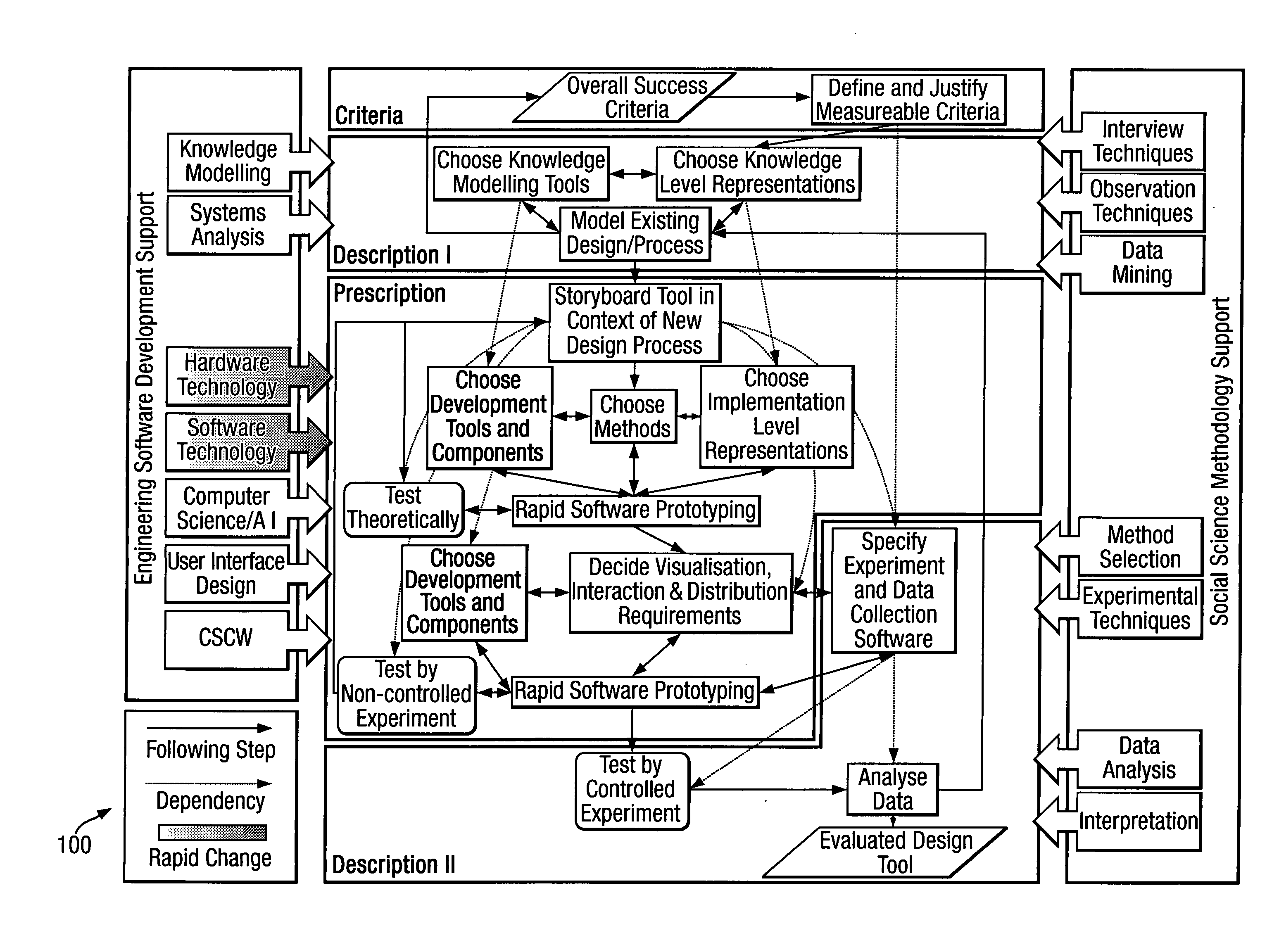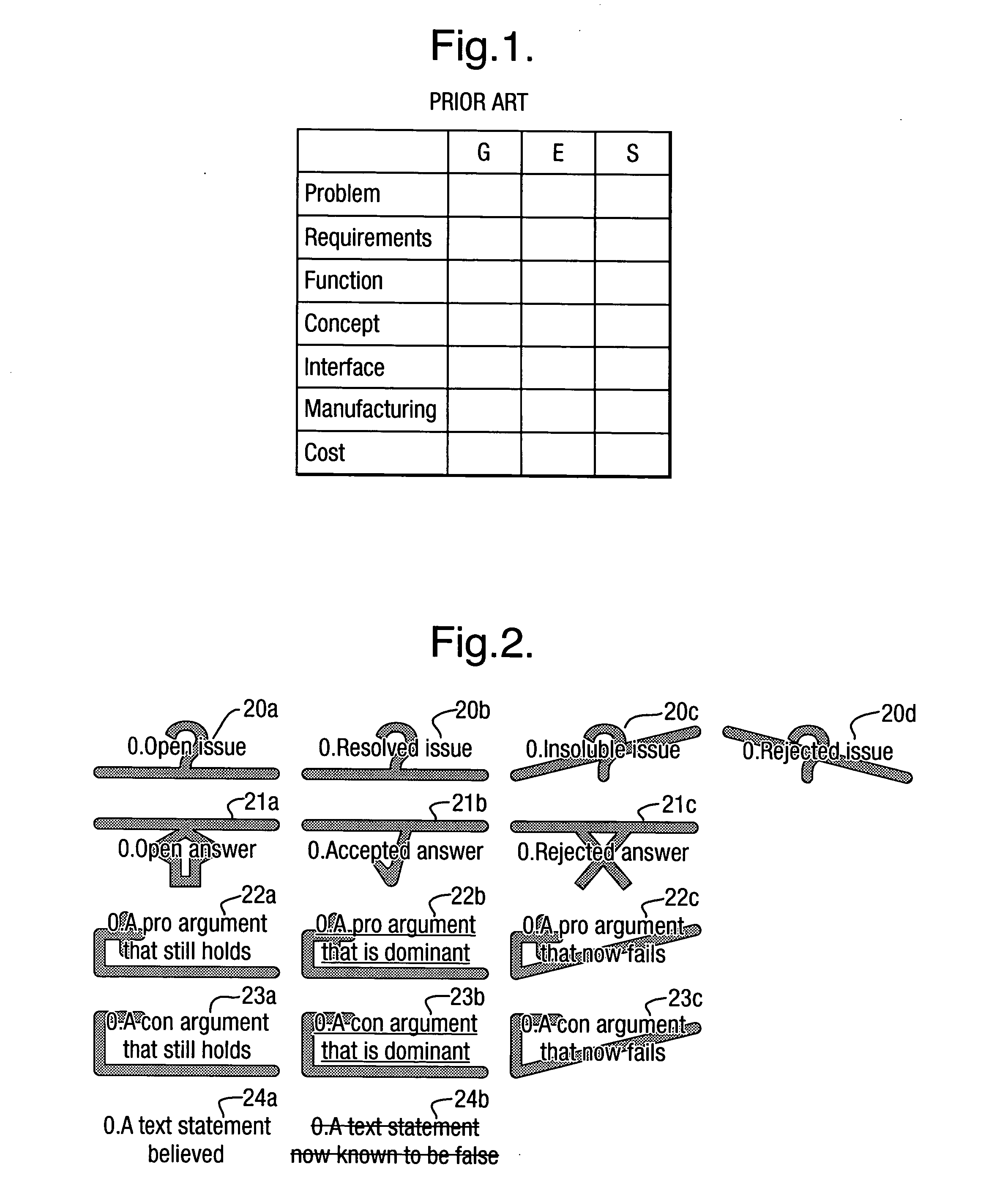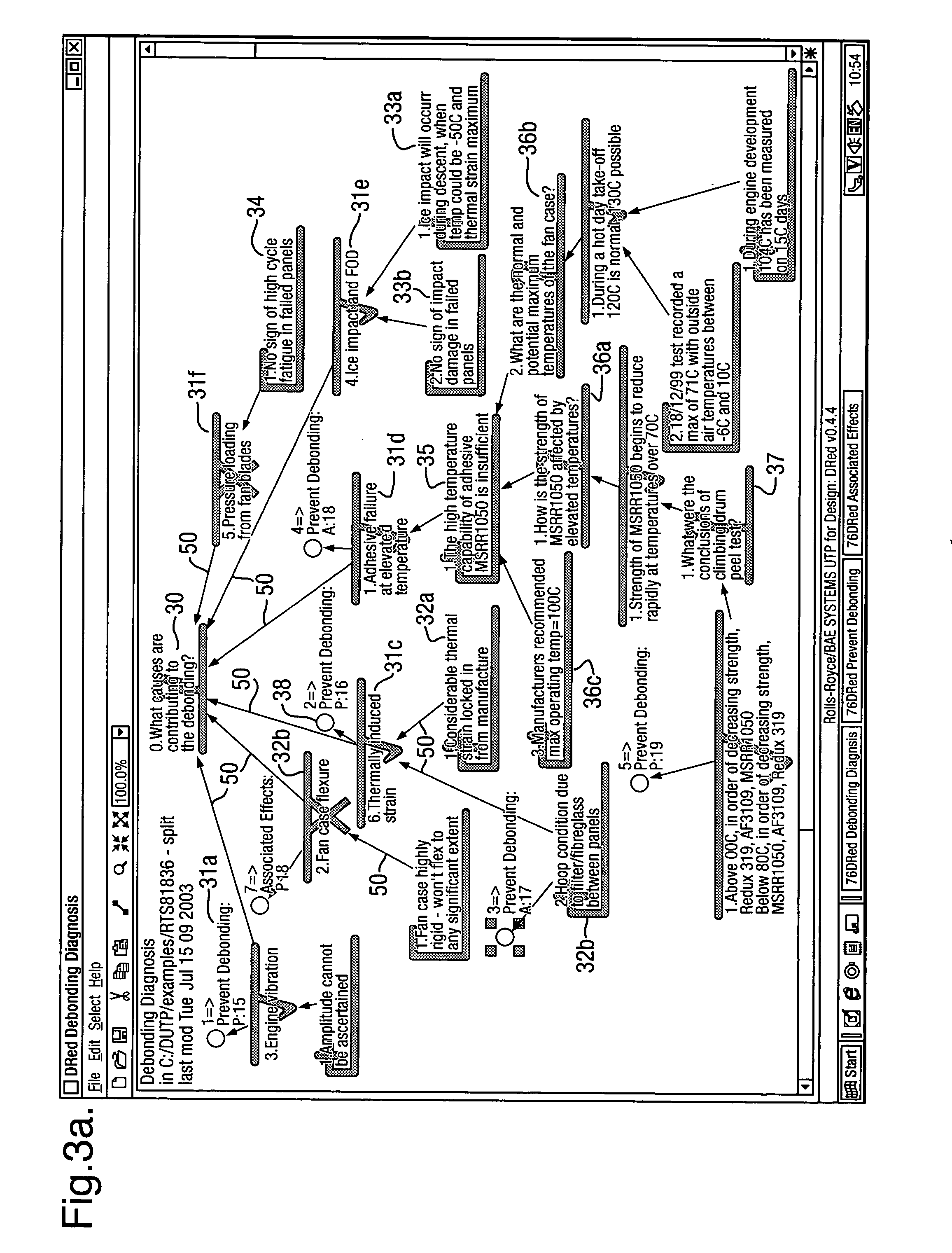Method, tool and system for increasing the efficiency of a design process
a design process and tool technology, applied in the field of methods, tools and systems for increasing the efficiency of a design process, can solve the problems of not being able to efficiently aid the design team, not easy to follow, and placing an undue burden on the design team, so as to achieve easy extraction, simple structure, and efficient and flexible
- Summary
- Abstract
- Description
- Claims
- Application Information
AI Technical Summary
Benefits of technology
Problems solved by technology
Method used
Image
Examples
first embodiment
[0093] Referring to FIGS. 1 to 5 there is shown the invention which is described with reference to a particular problem encountered during a design and diagnosis project. Although reference is made to several aspects of a jet engine, only diagrammatical references are depicted in the Figures.
[0094] Previously, as depicted for example in FIG. 1, design processes and procedures comprised a process of generating, evaluating and storing solutions in a matrix or linear format. A key problem associated with this type of design process was the fact that unless a clear and consistent indexing system was used, with nomenclature universally understood by current (and future) members of a design team, there were flaws in the system. Another drawback with such liner type systems was the inability to retrieve specific pathways leading to the conclusion of a particular design and the associated reasons for making that design.
[0095] The present invention is described with specific reference to a ...
second embodiment
[0136] Referring now to FIGS. 6 to 10, which illustrate the invention, FIG. 6 shows a graphical representation of methodology used for designing and testing the present invention. The methodology hereindescribed is a practical approach, intended to enable development of usable software prototypes as early as possible in research. The methodology provides a choice of high level languages, tools, reusable software components, integration and code-hardening mechanisms.
[0137]FIG. 7 shows how the methodology was applied to the design and testing of the present invention, and the tasks are numbered in the order that they were performed. Task 101 is “Overall Success Criteria” and states the basis for judgement of success or failure of the project under which the invention was created. The criteria were:
[0138]“Did the project correctly identify crucial problems faced by aerospace industry designers, in the capture, sharing and reuse of knowledge?” and “Did the project suggest how one or mo...
PUM
 Login to view more
Login to view more Abstract
Description
Claims
Application Information
 Login to view more
Login to view more - R&D Engineer
- R&D Manager
- IP Professional
- Industry Leading Data Capabilities
- Powerful AI technology
- Patent DNA Extraction
Browse by: Latest US Patents, China's latest patents, Technical Efficacy Thesaurus, Application Domain, Technology Topic.
© 2024 PatSnap. All rights reserved.Legal|Privacy policy|Modern Slavery Act Transparency Statement|Sitemap



